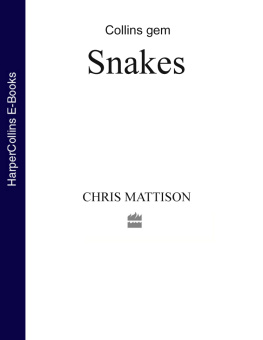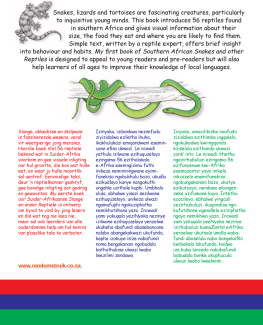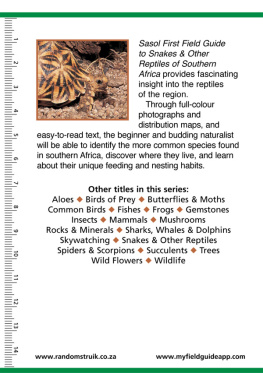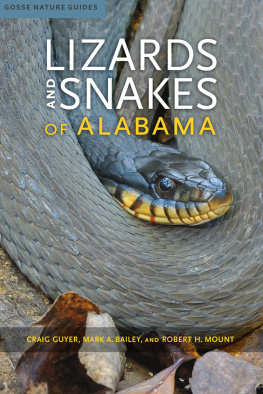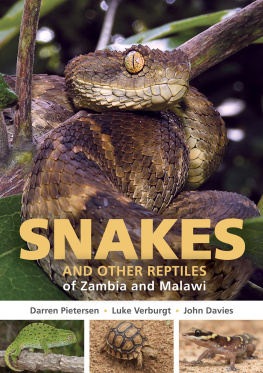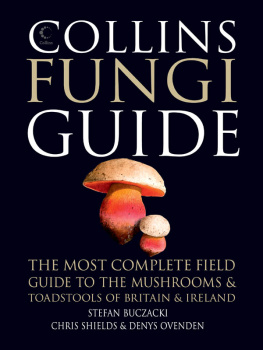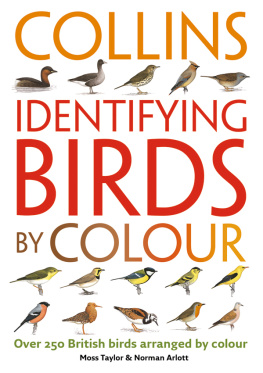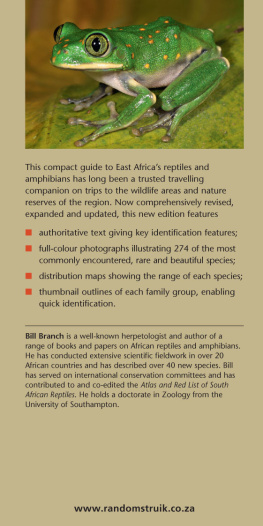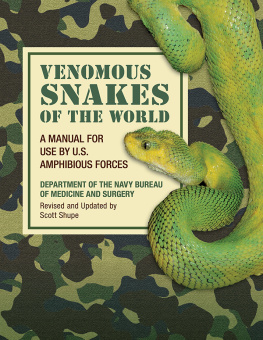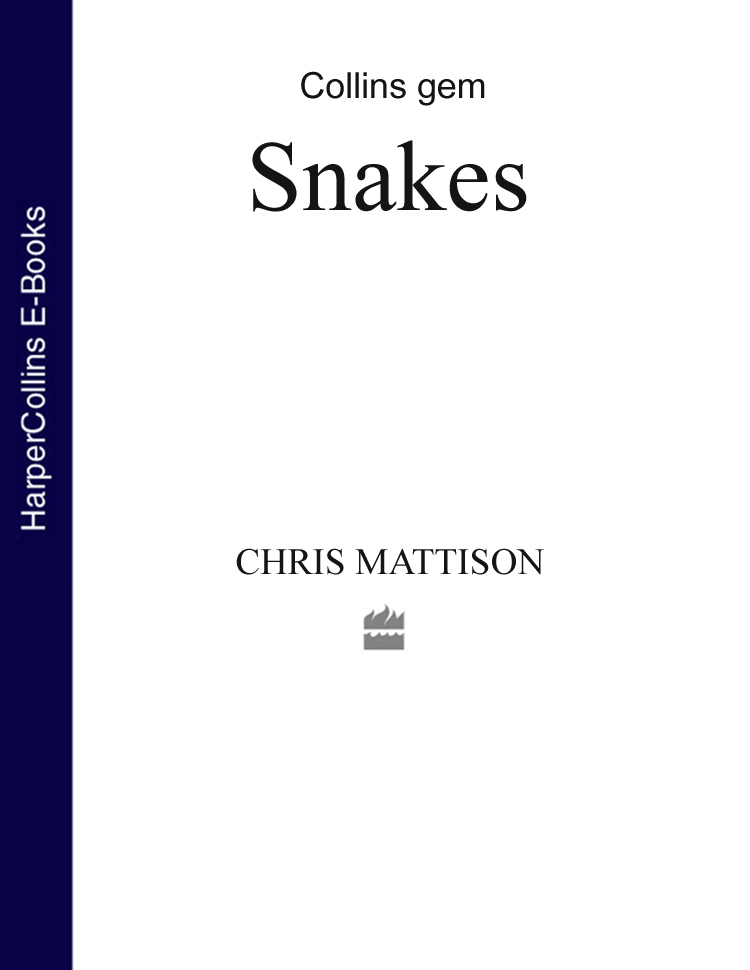
Australia
HarperCollins Publishers (Australia) Pty. Ltd.
Level 13, 201 Elizabeth Street
Sydney, NSW 2000, Australia
www.harpercollins.com.au
Canada
HarperCollins Canada
2 Bloor Street East - 20th Floor
Toronto, ON, M4W, 1A8, Canada
www.harpercollins.ca
New Zealand
HarperCollins Publishers (New Zealand) Limited
P.O. Box 1
Auckland, New Zealand
www.harpercollins.co.nz
United Kingdom
HarperCollins Publishers Ltd.
1 London Bridge Street
London SE1 9GF
www.harpercollins.co.uk
United States
HarperCollins Publishers Inc.
195 Broadway
New York, NY 10007
www.harpercollins.com
Of the nine families grouped together in this section, three contain species that look very similar and the other six each contain only a small number of species. They are thought to have evolved very early in the history of snakes. They all have a pelvic girdle (the bone to which their hind limbs would be attached if they had them) and some have small thorn-like structures, the remains of hind limbs that have all but disappeared.
Primitive burrowing snakes (blind and thread snakes) The three families of primitive burrowing snakes are the Anomalepididae (which has no English name), the thread snakes (Leptotyphlopidae) and the blind snakes (Typhlopidae). All the 330 or so species in these families are small, from about 1095 cm in length. They have thin, cylindrical bodies, short tails and smooth, shiny scales. Their eyes are minuscule and their jaws are more rigid than in other snakes. They are found in most of the warmer parts of the world.
Primitive specialised snakes
Of the six remaining families, the sunbeam snake family (Xenopeltidae) and the dwarf pipe snakes (Anomalepidae), each contains two species and two further families contain only a single species each: these are the Central American Sunbeam Snake (Loxocemidae) and the Red Pipe Snake (Aniliidae). The shield-tailed snakes (Uropeltidae) and the pipe snakes (Cylindrophiidae) are from Asia and contain 45 and eight species, respectively.
The snakes belonging to the following two families the Wood Snakes or West Indian Boas (Tropidophiidae) and the Round Island Boas (Bolyeriidae) are not, strictly speaking, boas at all. They were classified with the boas for many years, however, and have certain similarities with them: they all have remains of hind limbs, in the form of small spurs, their heads are covered with numerous small scales, and they all constrict their prey.
The Tropidophiidae is a family of 21 species. Most are found in the West Indies, especially on the island of Cuba, but a few occur on the Central or South American mainland. They are small boa-like snakes that live secretive lives, emerging mainly at night to feed. Several species are rare; some are known from only two or three specimens.
The Bolyeriidae contains just two species, one of which, the Round Island Keeled-Scaled Boa, is probably extinct. The other species also lives on Round Island, near Mauritius in the Indian Ocean, and is endangered. Much of the habitat on Round Island was destroyed after the introduction of goats and rabbits in the nineteenth century, and introduced rats preyed on the snakes eggs and young.
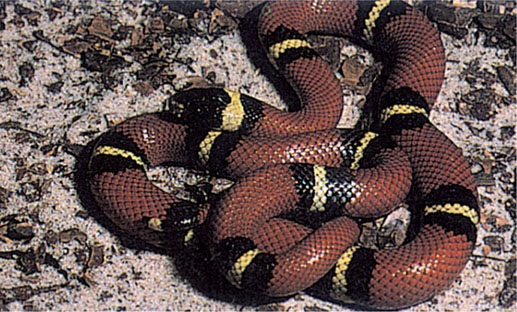
A slender snake with smooth scales. The predominant colour is red or orange, with widely spaced blackwhiteblack rings. The head is black, with a white collar. Juveniles are often more brightly coloured than adults. It is nervous and quick moving, although it rarely bites.
| Size | To about 1 m, usually less. |
| Distribution | Sinaloa State, Mexico and parts of nearby states. |
| Habitat | Dry lowland scrub and fields. |
| Food | Lizards and small mammals. |
| Breeding | Egg-laying, with clutches of 38 eggs. |
| Notes | Distinguished from most other milksnakes by the wide red areas between the black and white rings. |
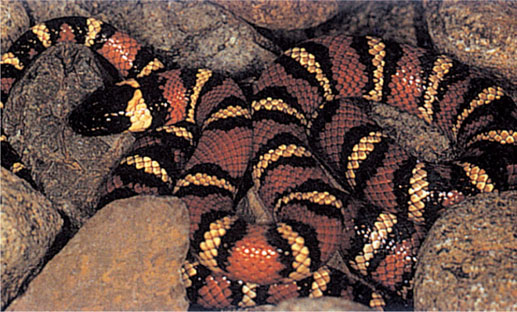
A slender snake with smooth scales and a cylindrical body. It is bright red, with narrow rings of white, bordered with black. The black areas are often wider along the middle of the back and may touch, especially towards the tail, reducing the amount of red present. The snout is black.
| Size | To 1 m, usually less. |
| Distribution | California and S Washington, USA, and Baja California, Mexico. |
| Habitat | Mountains. Among rockpiles, especially in coniferous forests. |
| Food | Lizards, snakes, birds and small mammals. |
| Breeding | Egg-laying, with clutches of 38 eggs. |
| Notes | The narrow rings and the black snout should distinguish it from similar species. |

A. Bannister
A stocky snake with smooth, shiny scales and a narrow head. The adult is olive-green with a thin orange line running along the centre of the back. Juveniles are more brightly coloured with specks of lime-green on each scale, and the orange line is more prominent.
| Size | To about 60 cm. |
| Distribution | SE South Africa. |
| Habitat | Grassland and scrub. |
| Food | Small rodents. The young also eat small lizards. |
| Breeding | Egg-laying, with clutches of 812 eggs. |
| Notes | Its coloration makes this snake unmistakable. |

Chris Mattison
E. & D. Hosking
Medium-built with small, smooth scales and large eyes. It is uniform brown, reddish-brown, orange or almost black, except for a cream line that runs from the top of the snout, over each eye and onto the neck. The underside is pinkish white and highly glossy.
| Size | To about 1 m, sometimes slightly more. |
| Distribution | S half of Africa |
| Habitat | Grassland, scrub and farmland. Often around villages, farms and even in large towns and cities. |
| Food | Mostly rodents, also other small mammals and lizards. A powerful constrictor. |
| Breeding | Egg-laying, with clutches of 815 eggs. May lay several clutches of eggs each year. |
| Notes | Certain other house snakes are similar, but rare. The pale streaks over the eyes are fairly distinctive. |
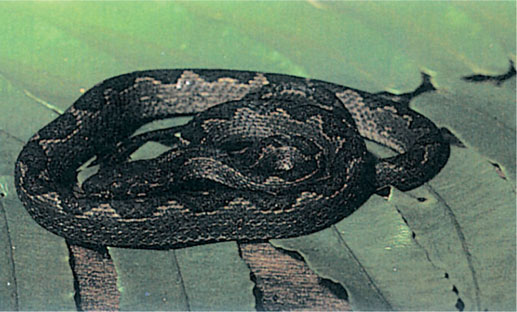
A slender snake with smooth scales, a broad head and large eyes, which have vertical pupils. Its body is cream or light brown and there is a series of irregular dark brown or black blotches along the back.
| Size | To about 1 m. |
| Distribution | From S Texas (just), through Central America and into N South America. |

